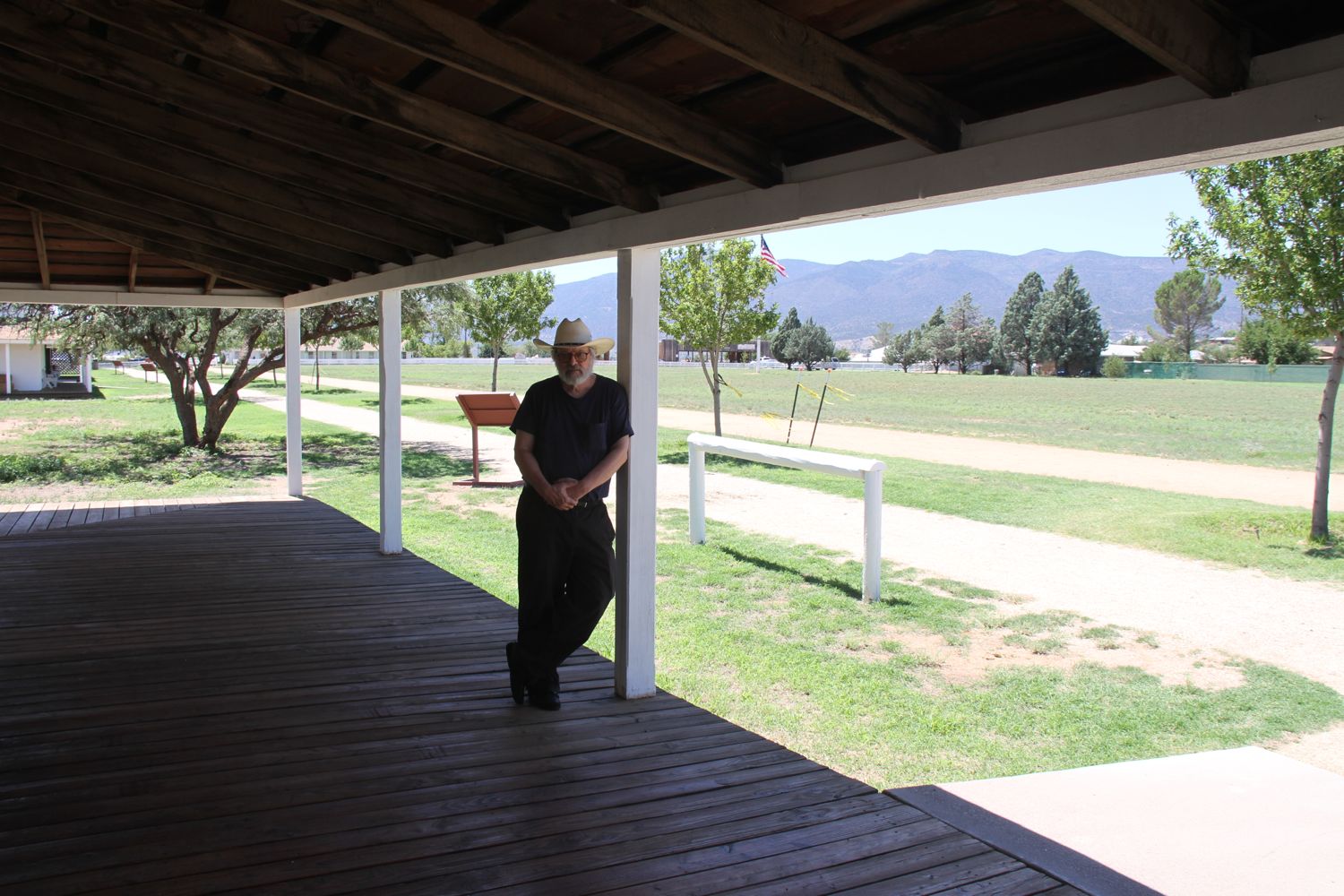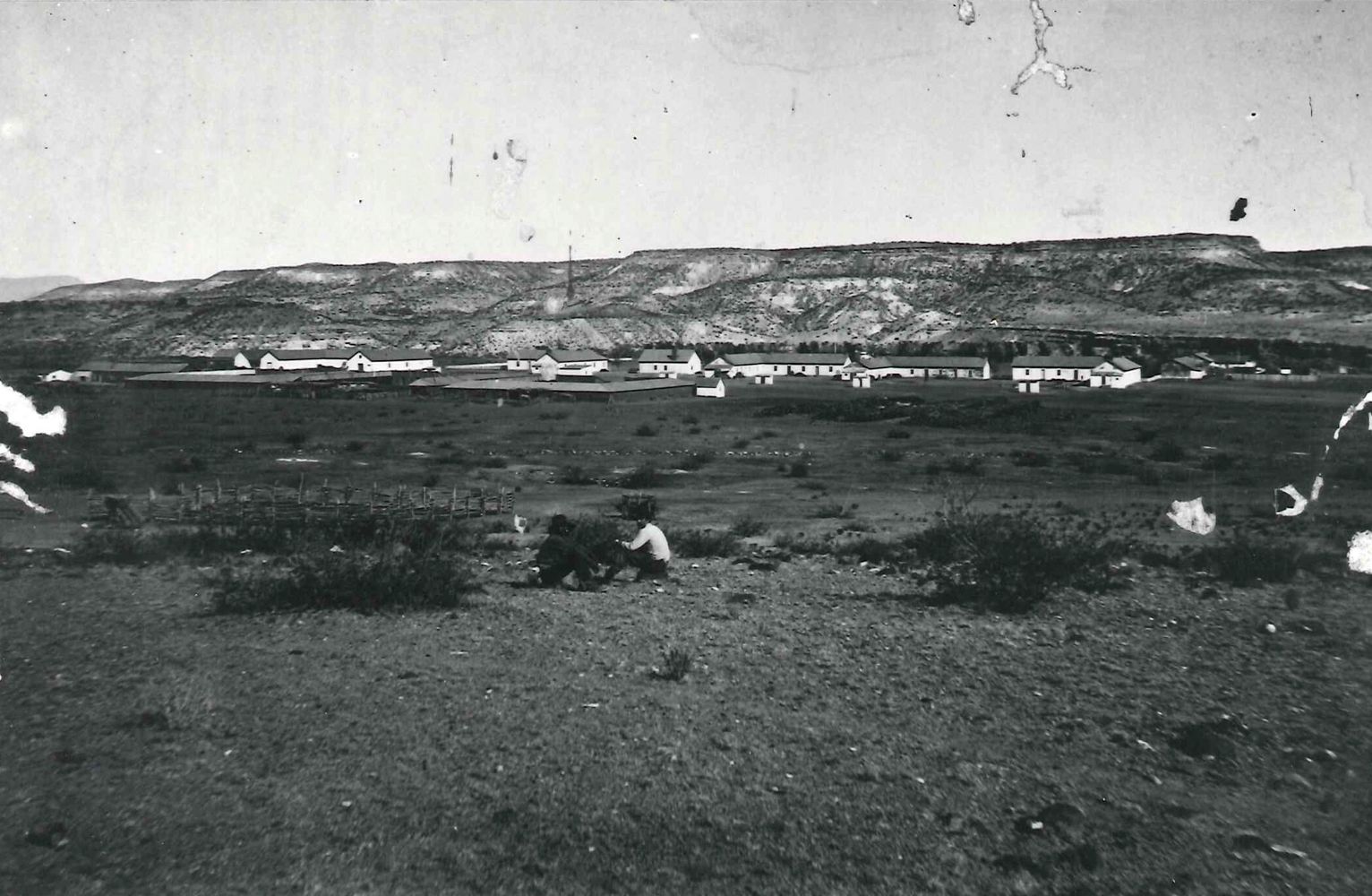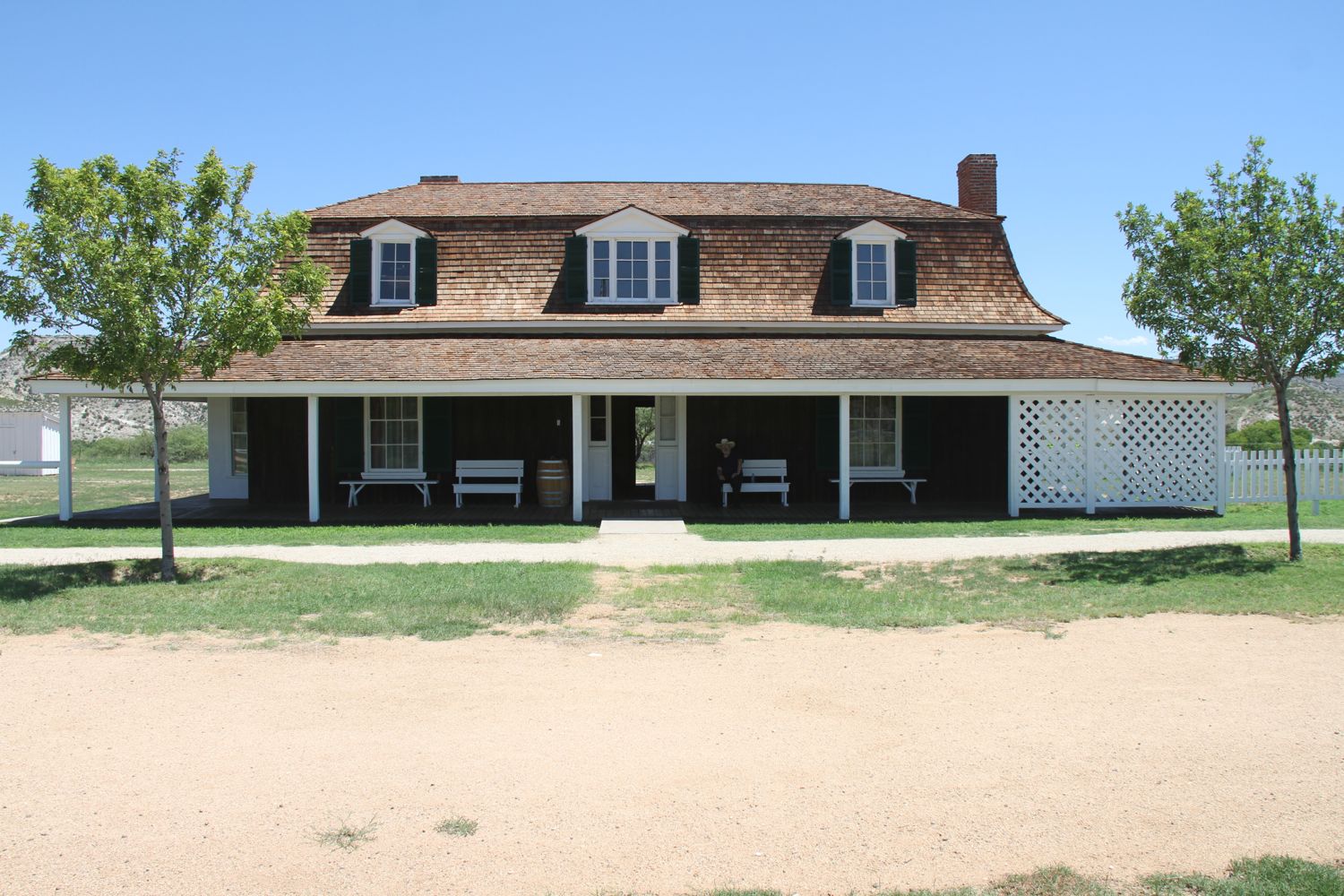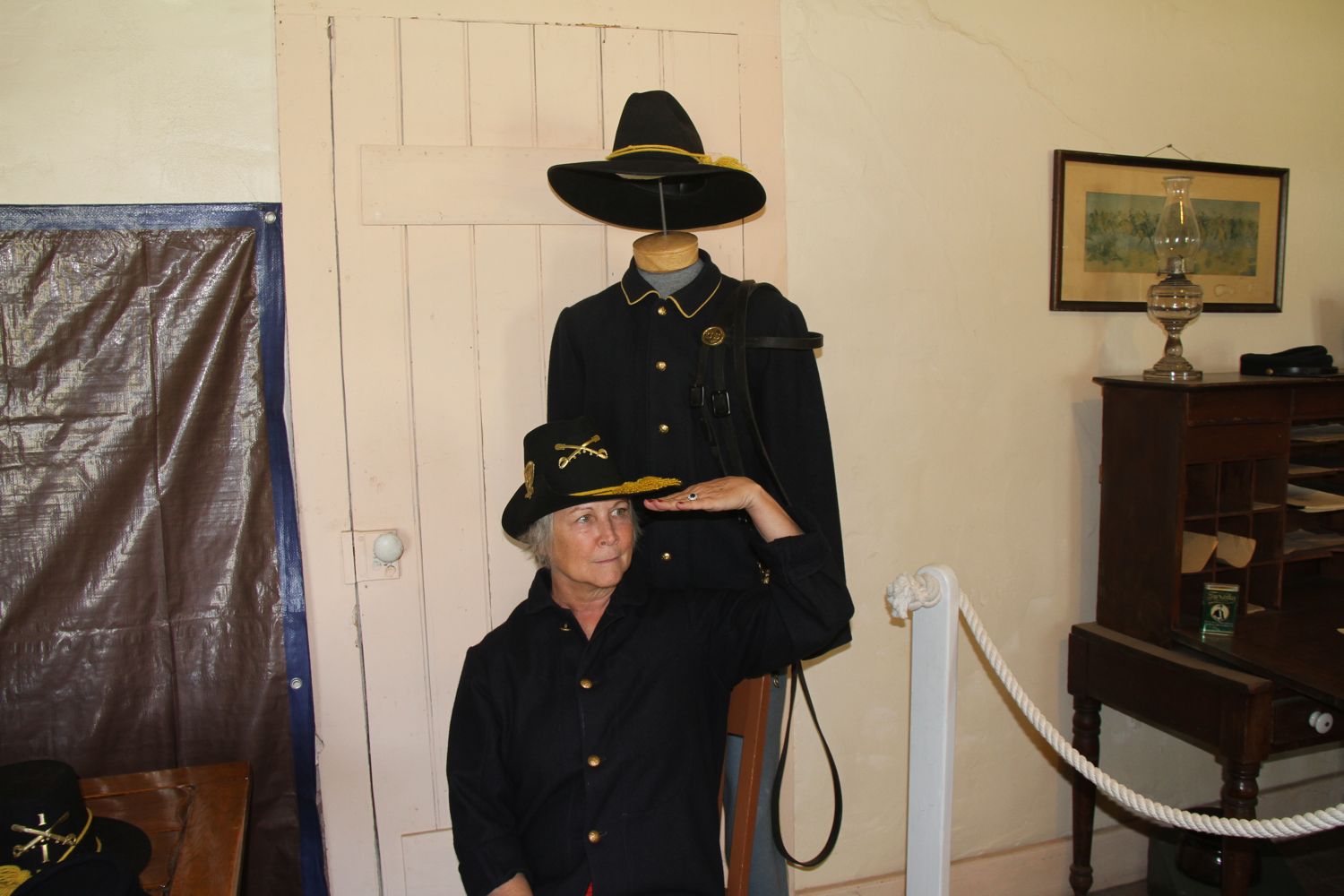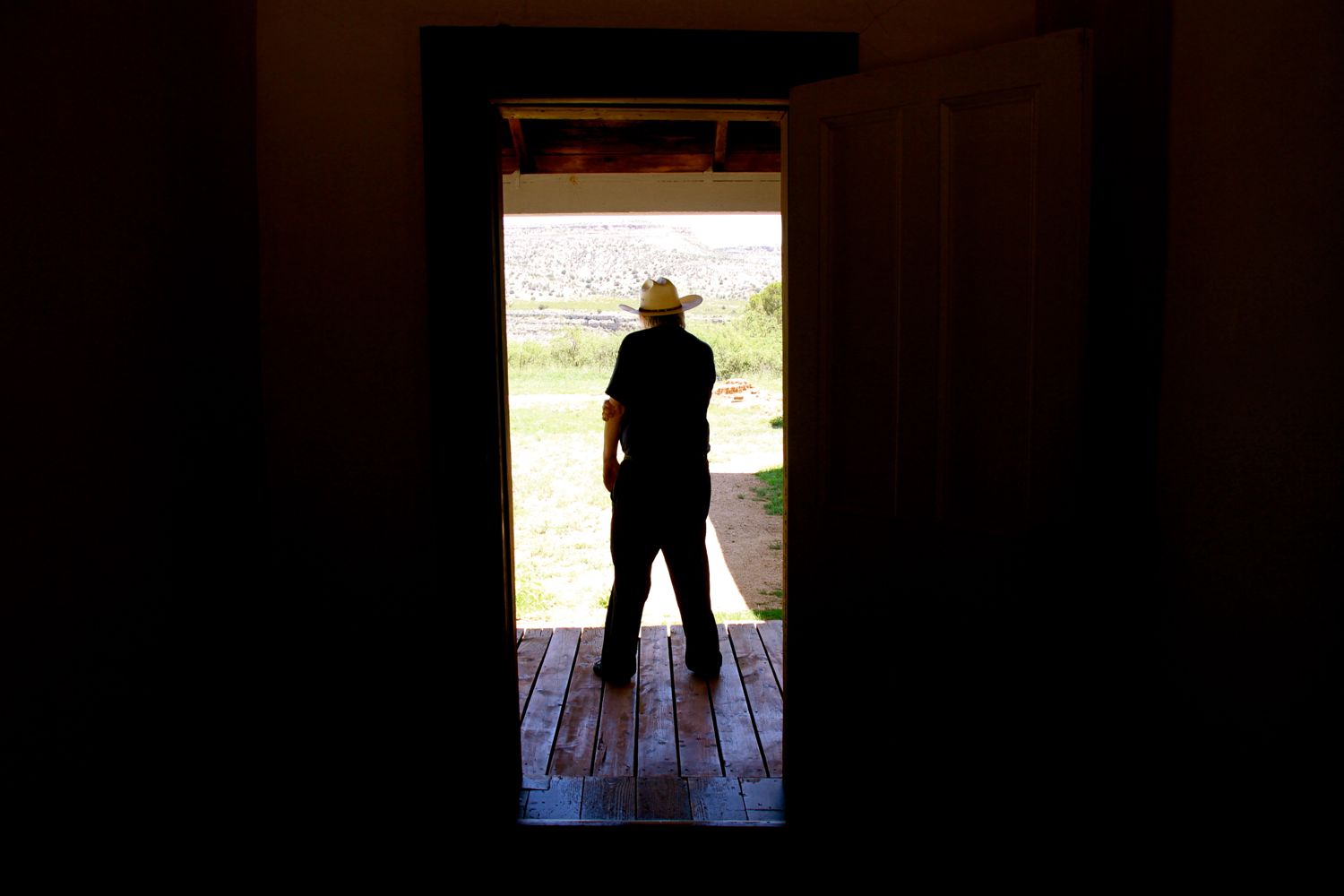The high point of our Arizona trip for me was a visit to Fort Verde, the best preserved of all the frontier cavalry posts in the state. Only a few post buildings remain, along with the parade ground, but it’s enough to give you a strong sense of what the place must have been like in its period of service from the 1870s to the 1890s. There’s not a lot of modern building around it that you have to overlook, as there is at Fort Hayes in Kansas, for example. Hayes was a bigger and more important post but its few 19th-Century structures are surrounded by a modern working army base.
Fort Verde, pictured above in 1879, was never a stockaded fort, like the ones you invariably see in Hollywood Westerns, and hardly any cavalry posts were — Indians almost never attacked large concentrations of soldiers, so there was no need for defensive walls.
General Charles King, whose novels give the best picture of everyday life in frontier army posts, was once stationed at Fort Verde, which served as the model for the fort in his most famous book, The Colonel’s Daughter. It was a place renowned for its civilized amenities, courtesy of the officers’ wives stationed there over the years. The commanding officer’s home, for example, below, had a mansard roof because the first commanding officer’s wife had seen them once on a trip to France and developed a fondness for them.
The post administration building survives, along with the commanding officer’s home, one building that housed unmarried officers and the post doctor’s house, all ranged on the edge of the parade ground, which feels haunted by the ghosts of many parades and formations of mounted men doing a tough job in a forbidding place.
So here they are: the dog-faced soldiers, the regulars, the fifty-cents-a-day professionals . . . riding the outposts of a nation. From Fort Reno to Fort Apache — from Sheridan to Startle — they were all the same: men in dirty-shirt blue and only a cold page in the history books to mark their passing. But wherever they rode — and whatever they fought for — that place became the United States.
My sister posed in one of the uniforms the park visitors’ center provides for such purposes.
I was thinking about John Ford the whole time.
[Contemporary photos © Libba Marrian]
Click on the images to enlarge.

